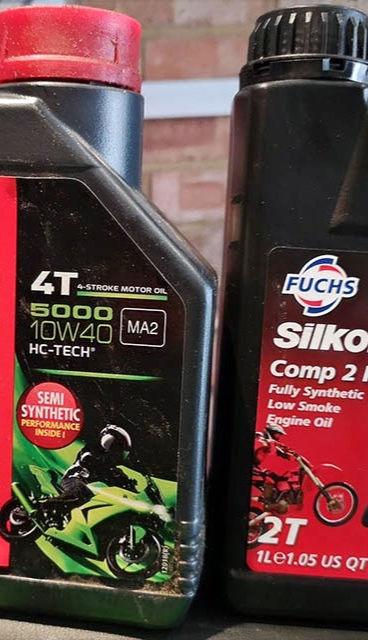HOW TO CHANGE: OIL AND FILTER
July 20, 2020
We all know how important it is for the health of your engine. To make sure the oil is changed regularly and it shouldn’t be too daunting of a job to do it yourself.
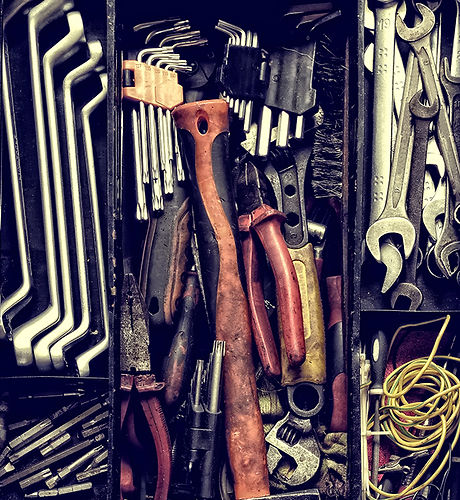

1. WARM HER UP
First thing to do when changing the oil is to start the bike up and get some heat into it.
MAKE SURE THE SURROUNDING AREA IS WELL VENTILATED
It’s a good idea to remove some of the bodywork so that you can access the SUMP PLUG and OIL FILTER
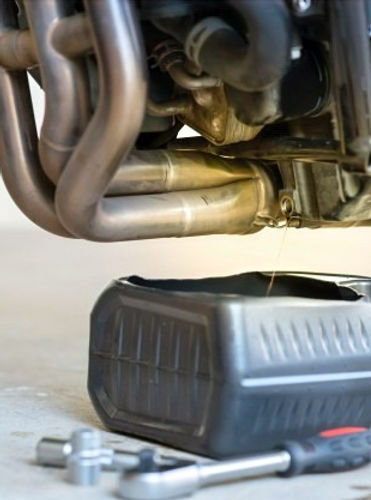
2. DRAIN THE OIL
Once the engine is nice and toasty its time to drop the oil.
Leave it to drain for a good five to ten minutes (5-10) .it might look like it has just stopped after a minute or two, but its better leaving the receptacle so that as much of the used oil gets a chance to drain out of the sump.
3. REMOVE THE FILTER
whilst the oil is draining, it is worth getting the filter off
There are numerous special tools to help remove the oil filter
Some filters come attached with a nut on the back so they can be removed with a normal socket.
(others like the big socket type or the sling type.)
Make sure the oil catch tray is underneath as you may lose a little bit of oil.
4. REPLACE
*The sump washer
* The sump plugs
Many people neglect replacing the sump washer during this process.
These are made of really soft material, often copper or aluminum and are designed o squash into the sump to make a good seal
These crush washers are designed to be used only once.
If the filter you buy doesn’t come with one, you can buy a box of these for not much cash
After replacing the washer, give the sump a wipe down and screw the plug back.
Once its started, set your Torque wrench to the specified torque and tighten the plug up until you get a click.
DONT TRY OVER TIGHTEN IT AS ITS REALLY EASY TO STRIP THE THREADS IN YOUR SUMP.
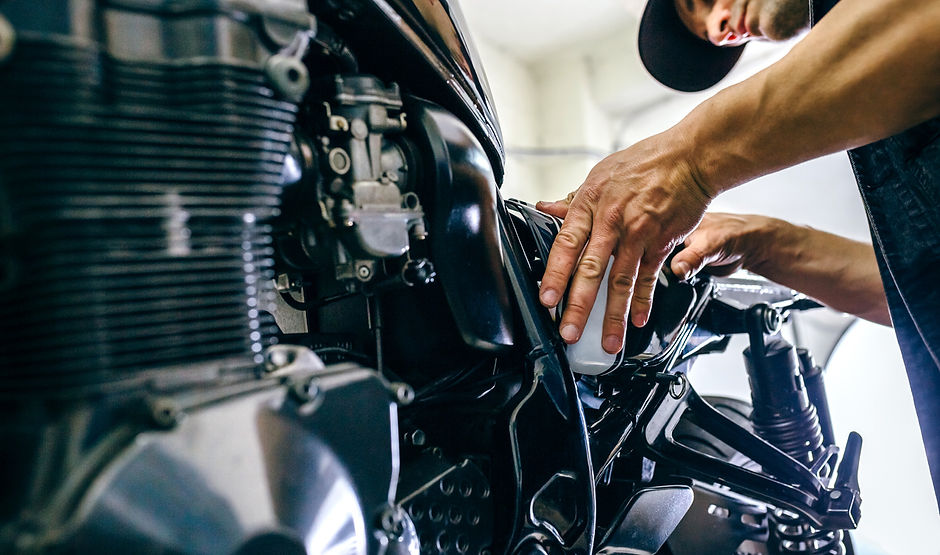
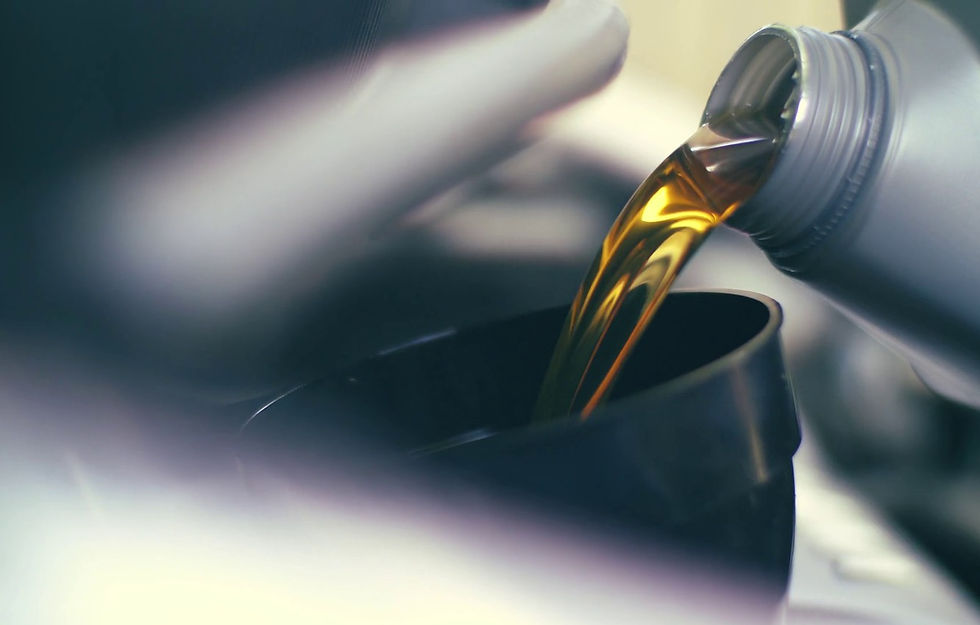
5. CHOOSING THE RIGHT OIL
There are different options to go when it comes to oil filters.
You can go down the Genuine Parts route, but expect to pay through the nose.
Or
You can go down the aftermarket products route, for a cheaper pick!
You can pick up most aftermarket filters off the internet manufacturers such as: HI FLO, KN.
6. FITTING THE NEW FILTER
Like the sump plug, the oil filter will have a torque setting, so its best to tighten it to the correct torque.
It’s a good thing idea to fill the oil filter up with oil before you fit it to the bike as it will take a little while for the oil to seep in and
It will take a good few spins of the crank to fill the lubrication system up
TRY NOT TO SPILL ANYTHING
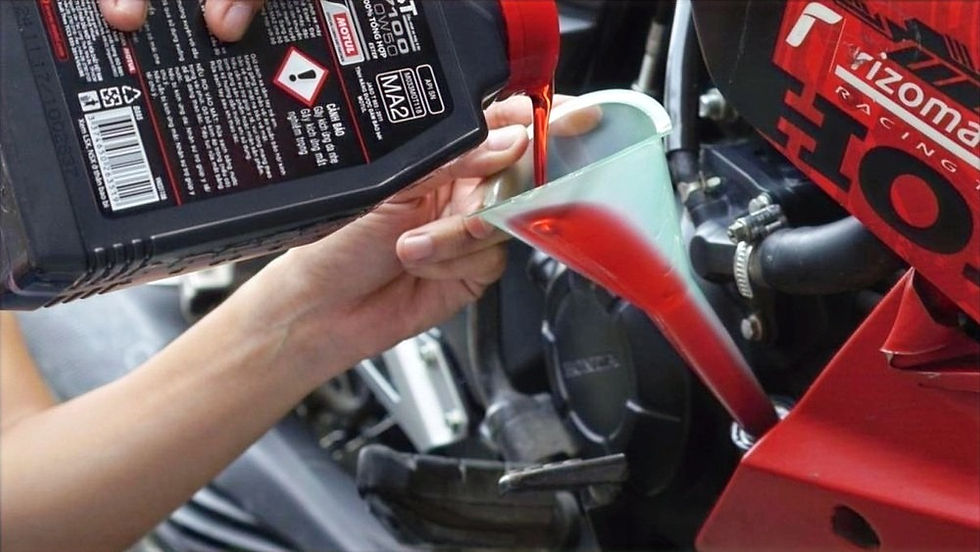
7. SECURING THE FILTER
Its not essential for a road bike, but it’s a good idea top secure the oil filter with a big jubilee clip.
(A Jubilee Clip is a genericized brand name for worm-drive hose clamp, a type of band clamp, consisting of circular metal band or strip combined with a worm gear fixed to one end. It is designed to hold a soft, pliable hose onto a rigid circular pipe, or sometimes a solid spigot, of smaller diameter.)
IF you like the idea of having some extra security on your filter
Fit your jubilee clip ON TO the filter as near to the engine as possible.
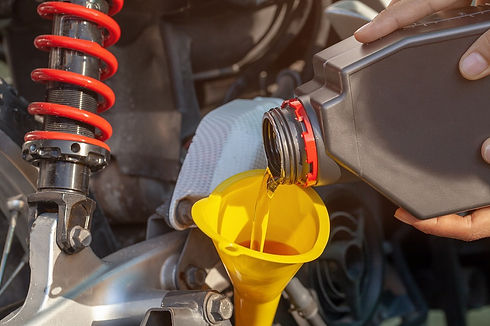
8. FRESH OIL
Trying to fill the engine with oil, straight out of a bottle can be a messy affair.
So if you have got a jug with a spout on it in the garage, or you’ll probably find one in the kitchen, but don’t let your mom/spouse see you taking it outside
Most motors will take between three and five (3-5) liters to pour some oil into a clean jug and then use a funnel to help you pour it into the engine.
To help you set the oil level, there will usually be a window! Or a Dipstick!
With a window –
Keep an eye on it, and as soon as oil is visible, slow down
Be aware that the oil will keep setting and the level will continue to rise after you have stopped pouring until you reach the correct level
With a Dipstick
It’s a little more difficult as you have to stop poring the oil in, WAIT for it to settle and then Check THE LEVEL.As when you fire the bike up, the oil in sump will be pumped around the engine, filling all the spaces that it previously drained out of causing the indicated level to drip.
9. OIL CHECK
Once your satisfied with the level, pop the oil filter cap back on. But don’t take your jug back to the kitchen yet!!
Fire the bike up for a minute or two in order to fill the nooks and crannies that had emptied in the draining process.
This also gets the oil moving around, which would highlight any leaks from a badly-seated oil filter or sump plug washer.
Whilst the bike is running, have a really good look around the filter and the sump plug to ensure there is absolutely no evidence of oil leaking out of the engine
Knock the engine off and wait a few moments for the oil level to stabilize. Once stabilized. There is a good chance that it will be slightly low
DON’T FORGET TO PUT YOUR FILTER CAP BACK ON

10. WASTE OIL DISPOSAL
There are a few really important rules to keep in mind when disposing of your waste oil
You mustn’t pour it down the sink or toilet.
You mustn’t pour it on your neighbor’s yard
Whatever you do ...DO NOT DRINK IT (It tastes horrible and will mess up your tongue)
TALE IT TO YOUR LOCAL DISPOSAL GROUND IN A COVERED BAG
POINTS TO REMEMBER
A little bit of fluff can be expected while drainig the oil
Use a clean tub for draining
Filter sockets make sure the job a it more easier
Always replace the sump washer
Cleanliness is key
Take your pick of products
Check the torque settings
Don’t forget to cube the the ring
CHOOSING THE RIGHT OIL
When it comes to replacing the engine out is your bike, choosing the right product is IMPORTANT
Your ‘Best Bet’ is to stick to the manufacturer’s guidelines, particularly when it comes down to getting the correct weight oil.
Semi synthetic oils are fine for most road bikes, but for higher performance engines and racing bikes
A fully Synthetic engine oil would normally to be more appropriate.
If your going on the track and youre dead keen on squeezing every last BHP pf your engine, then there are competition lubricants that tend to have much lower viscosity, than what you might put on a road bike
Oils like OW30 OW40 tend to be used by these that need all the power they can get.
But they aren’t cheap! And need to be changed a lot more frequently!
